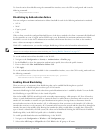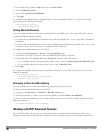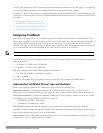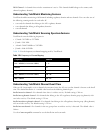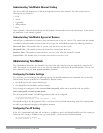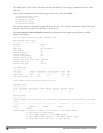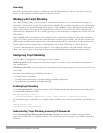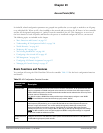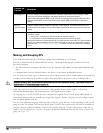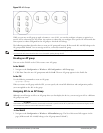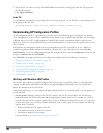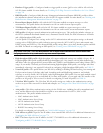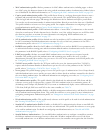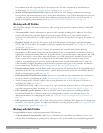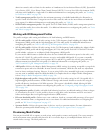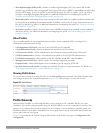
394 | AccessPoints(APs) DellPowerConnectW-SeriesArubaOS6.2 | User Guide
Features and
Function
Description
RF Management Configure settings for balancing wireless traffic across APs, detect holes in radio coverage, or other
metrics that can indicate interference and potential problems on the wireless network.
Adaptive Radio Management (ARM) is an RF spectrum management technology that allows each AP to
determine the best 802.11 channel and transmit power settings. ARM provides several configurable
settings.
Intrusion
Detection System
Configure settings to detect and disable rogue APs, ad-hoc networks, and unauthorized devices, and
prevent attacks on the network. You can also configure signatures to detect and prevent intrusions and
attacks.
Mesh Configure Dell APs as mesh nodes to bridge multiple Ethernet LANs or extend wireless coverage. A
mesh node is either
l a mesh portal—an AP that uses its wired interface to reach the controller
l or a mesh point—an AP that establishes a path to the controller via the mesh portal
Mesh environments use a wireless backhaul to carry traffic between mesh nodes. This allows one 802.11
radio to carry traditional WLAN services to clients and one 802.11 radio to carry mesh traffic as well as
WLAN services. Secure Enterprise Mesh on page 439 contains more specific information on the Mesh
feature.
Naming and Grouping APs
In the Dell user-centric network, each AP has a unique name and belongs to an AP group.
Each AP is identified with an automatically-derived name. The default name depends on if the AP has been
previously configured.
l The AP has not been configured—the name is the AP’s Ethernet MAC address in colon-separated hexadecimal
digits.
l Configured with a previous ArubaOS release—the name is in the format
building.floor.location
You can assign a new name (up to 63 characters) to an AP; the new name must be unique within your network. For
example, you can rename an AP to reflect its physical location within your network, such as “building3-lobby”.
WARNING: Renaming an AP requires a reboot of the AP before the new name takes effect. Therefore, if you need to do this, there
should be little or no client traffic passing through the AP.
In RF Plan or RF Live, the AP name can be part of a fully-qualified location name (FQLN) in the format
APname.floor.building.campus
. The
APname
portion of the FQLN must be unique.
An
AP group
is a set of APs to which the same configuration is applied. There is an AP group called “default” to
which all APs discovered by the controller are assigned. By using the “default” AP group, you can configure features
that are applied globally to all APs.
You can create additional AP groups and assign APs to that new group. However, an AP can belong to only one AP
group at a time. For example, you can create an AP group “Victoria” that consists of the APs that are installed in a
company’s location in British Columbia. You can create another AP group “Toronto” that consists of the APs in
Ontario. You can configure the “Toronto” AP group with different information from the APs in the “Victoria” AP
group (see Figure 112).



